Tangy, smoky, earthy, and slightly sour, sumac is an essential spice in Middle Eastern cooking. With its deep red hue and fruity, citrusy flavor, sumac spice is the perfect way to add acidity and color to your meals!
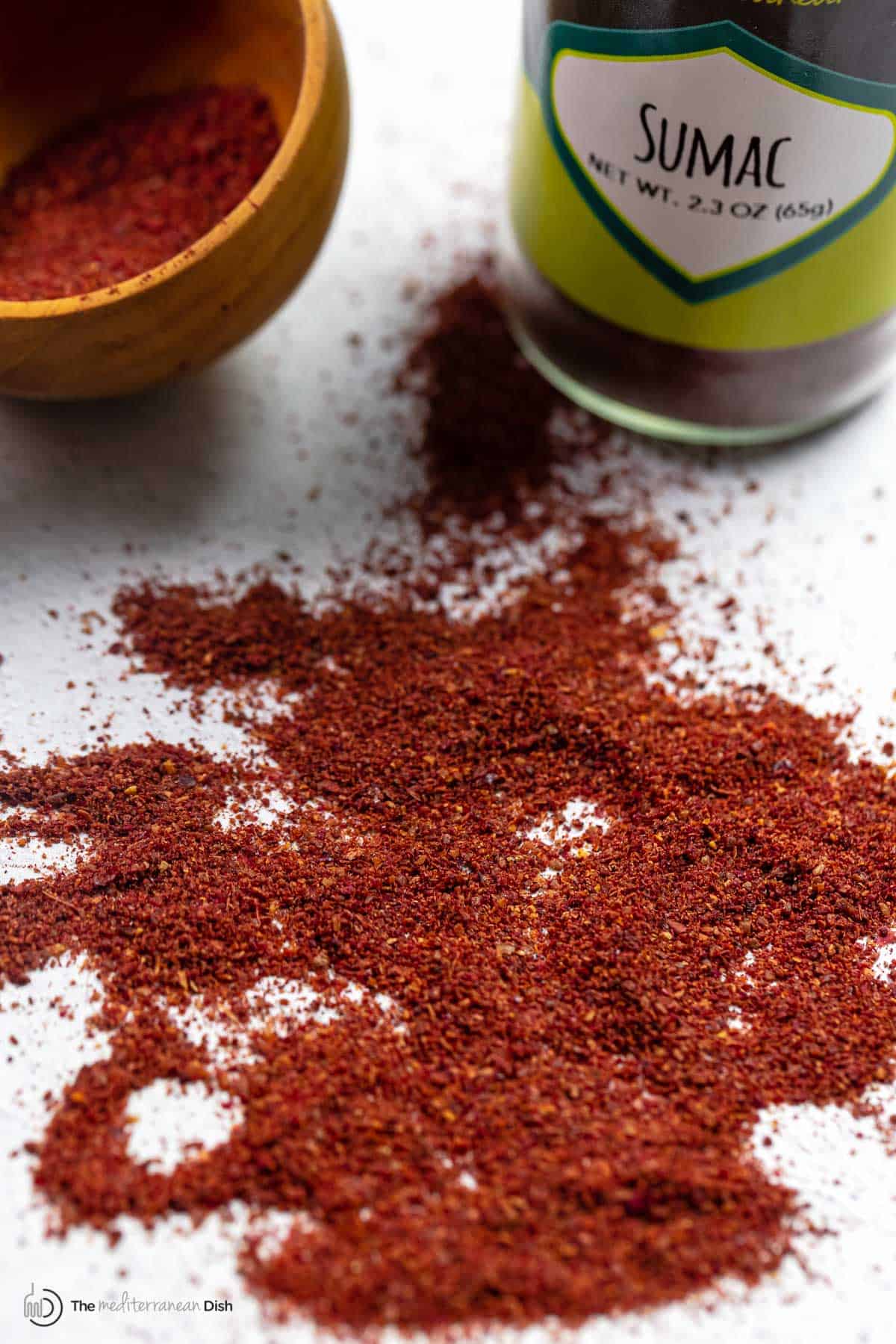
In this post, we’ll learn all about an essential ingredient in the Middle Eastern pantry: sumac. No, we’re not talking about the poisonous variety, which is white in color (we’ll make sure you know about that one too so you can avoid it). Sumac spice that is used in cooking is red, more like a deeper berry color. It comes from sumac berries, which are turned into a coarse powder, sifted, and sold in spice bottles for culinary use.
This deep red spice is the main flavor maker in some traditional Middle Eastern dishes like fattoush salad and musakhan, but it is a versatile spice that can add depth and tang to many things including chicken, fish, and all sorts of salads! It is also a main ingredient in zata’ar, and is great combined with other seasonings like allspice and chili pepper flakes to make rubs for grilled meats. I’ll give you a few of my favorite recipes that use this beautiful spice below.
Let’s dive into some burning questions including, exactly what is sumac? How does it taste? And more.
In this post
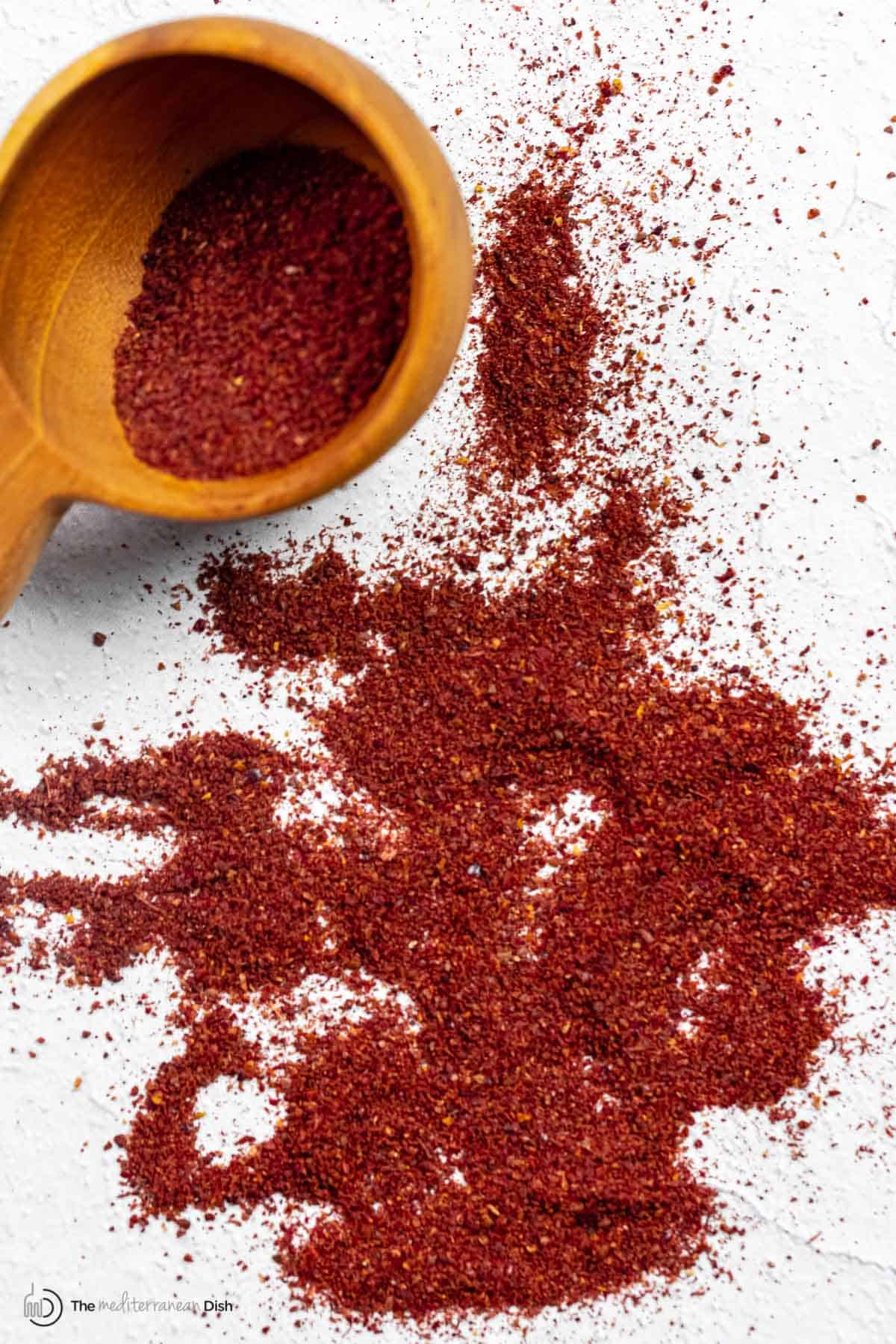
Sumac
Sumac comes from the Arabic “summaq,” which means “dark red.” It is a crimson red, astringent spice popular in Middle Eastern cooking. It’s made from the berry fruit of the Rhus Coriaria shrub, which were originally grown in parts of the Mediterranean basin, then spread to Europe. The berries are dried, then ground and sifted to get rid of the bitter inner seed. The coarse crimson-colored powder is then bottled as a spice to use in cooking.
This type of sumac is also known as Sicilian sumac or Tanner’s sumac. And it might surprise you to learn that sumac is actually a member of the cashew family, anacardiaceae!
What does sumac taste like?
It tastes somewhat like fresh lemon juice – a bit sour and astringent! But it’s much more complex and nuanced in flavor. Sumac is tangy and deep with a hint of earthy sweetness and floral citrus notes. You just have to try a pinch to know!
Some describe it as a “dry acid”, but it also works a bit like salt in that it brings out the natural flavors of a given food. That’s why it is ideal for dry rubs, and I highly recommend it on grilled chicken thighs or fish like my roasted red snapper!

Cooking with sumac spice
Arabs use it to add tang and tartness, and in general, it is a great way to add lemony flavor to dishes or rubs. And because of its acidity, it pairs wonderfully with meat like lamb, helping to cut through the richness and balance it out. It’s also a classic seasoning for astringent red onions, from the onions served with Turkish kebabs to the filling for Middle Eastern Fatayer (Spinach And Onion Savory Hand Pies).
But why stop there? I use the spice in a ton of different ways! Salad dressings, marinades, and even homemade dips are immediately elevated by a sprinkle of this complex spice.
One of my favorite salad dressings requires nothing more than a dash of sumac, extra virgin olive oil, and fresh lemon juice. And as far as marinades and rubs, my grilled chicken drumsticks, whole roasted snapper, and grilled cod would not have the simultaneously bright and earthy flavor they do without the vibrant spice!
And while I love it in marinades and salad dressings, this spice works perfectly as the finishing touch on a variety of dishes (similar to how a squeeze of lemon juice at the end of cooking immediately brightens a dish). Just try sprinkling a dash onto some homemade hummus and you’ll see what I mean. You’ll instantly have a contrast of flavor between the nutty hummus and the sour spice, adding depth with no effort at all.
One really surprising way to use it is in desserts! Yes, you can add a pinch over your ice-cream or fruit, like the macerated strawberries in our strawberry shortcake recipe. Or even in your cookie or brownie batter (I’ll be trying that next time I make tahini brownies).
Where to buy it
My favorite all-natural sumac spice is available in our online shop. It is all-natural, and because we intentionally always carry a smaller supply, our spices are more fresh and pungent than what you’ll find in your average grocery store.
Middle Eastern stores might sell both the ground kind and whole dried berries. Keep in mind that some sumac spice sold in stores can be mixed with citric acid and food coloring.
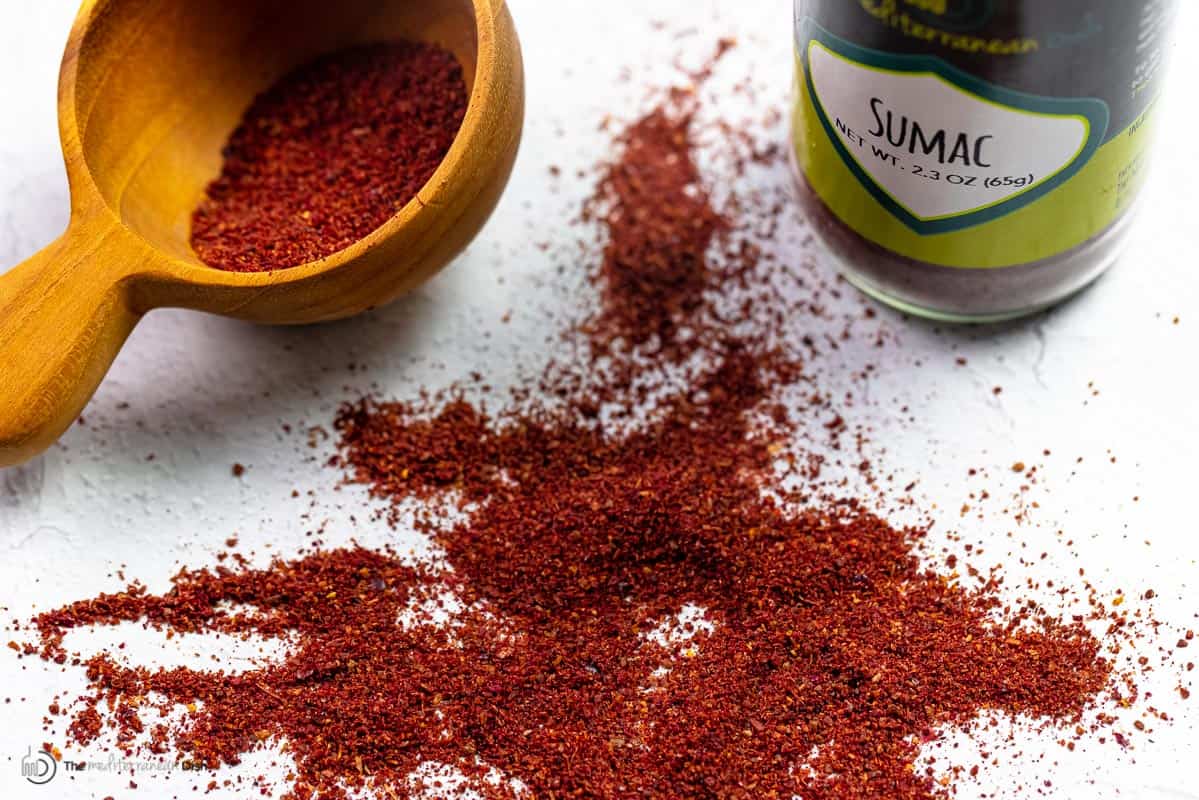
Available via our Online Shop
Substitutes
Sumac is quite unique and hard to replace with one ingredient. But you can substitute it by mixing lemon juice and lemon zest with a little kosher salt, vinegar, or tamarind. I find that none of those options provide the same depth of flavor though, but they’ll do in a pinch. If you decide to use one of them, use sparingly, as they are all more sour.
Poison sumac that you should avoid
The easiest way to tell poison sumac is by its color. It has white berries, while the edible kind, as you now know, has deep red berries.
The poisonous variety grows in damp, swampy areas of the eastern United States. Like poison ivy and poison oak, poison sumac contains the toxin urushiol – and the entire plant is poisonous (including the stems and leaves). If you happen to brush against it, you will likely be left with an itchy red rash.
How to store it
When stored correctly, the ground spice can keep for several months. Whole dried berries will keep for over a year! Be sure to store sumac (ground or whole) in an airtight container, away from light and heat – an unheated pantry would do nicely.
Visit Our Online Shop to find this spice and more quality Mediterranean ingredients!

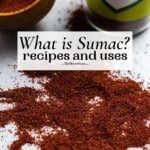
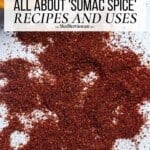
Love ❤️ to have recipes, i love the way Mediterranean people cook
I’ve seen your YouTube videos and I am really excited to try some recipes. Also I will be ordering olive oil as well. Thank you for sharing your way of life with old ladies like me. We are a family of 5 and I do the cooking. We really need to eat more healthy and you make it look like this 72 year old gal can do it. Thank you, G-MA
Aww! What a sweet note! Thank you so much, Donna!
If I wanted to harvest sumac berries. which sumac tree has the most flavor?
I would not harvest Sumac on your own. Some plants are poisonous. It’s best to purchase professional culinary sumac unless you are an experienced forager.
After reading about sumac, I was wondering if it would work well with pork Chops or a pinch in an egg,feta and spinach omlet.
Absolutely! It’s such a versatile spice. Enjoy!
Sounds fun
Unfortunately my sister is allergic to sumac. I was reading that you can kinda substitute it. I was wondering of you added smoked paprika to your lemon (juice or zest) if it would help bring that earthy smokey flavor.
Hi, Brandi. It may, but we have never experimented with sumac substitutes before, so it’s hard to say for sure. I think it would be worth a try in a pinch, though! If you give it a go, please stop back and share your thoughts.
I love Middle Eastern food and want to learn how to use the spices.
Hi, Kathleen! You have come to the right place! We also have articles on Urfa Biber, Aleppo Pepper and Ras el Hanout, with more on the way :).
I’m so excited to try your Sumac and recipes.
I’ve used this spice with chicken along with nutmeg in a marinade. It reminds me a lot of szechuan peppercorns used in Asian cooking in that it is slightly astringent. Szechuan peppercorns don’t have the lemony taste but is a bit more numbing than sumac. Both add umami to the food. I haven’t tried it with fish yet but that is next on my agenda. However, I did add it to my spanakopita filling and it was interestingly nice.
I mixed equal parts sumac, garlic powder and salt on some tuna steaks. Pretty fantastic.
Interested in recipes using sumac which I just purchased from Amazon. I love tart flavors and am very hopeful for this.
As you were describing the taste and possible substitutes it almost sounds like the Mexican spice blend they put on everything called Tajin which is lime, mild chili, and salt. I might have to experiment. I have a recipe for vegan tebbeh I want to try. Great site BTW!
I didn’t have my glasses on and accidentally put a ton of sumac in my macaroni enchilada casserole! I added the chili powder anyway (I like lots) and it was fabulous ! Shocked but it went well with the hamburger/macaroni/enchilada sauce and cheese.
I believe that is what is known as a happy accident :).
12-20-23 I just bought our first 2 oz bottleof Sumac, ground but not fine it is crunchy and hard to chew like med. ground black pepper. is that normal?
Hi, Mike. I’m going to forward your question to out shop team at sales@themeditarraneandish.com. Someone will reach out to you via shortly.
Until now I just grew it fo my honeybees. They like the nectar,and I would burn the berries in a smoker to calm the bees.
Very interesting, Greg! Now you need to give it a try in some recipes for yourself!